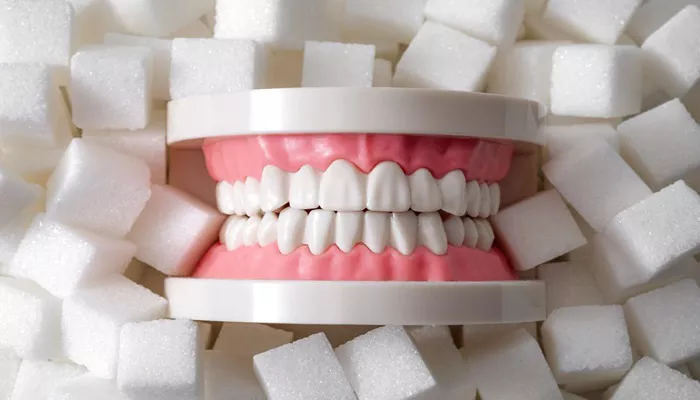Gum disease, also known as periodontal disease, is a common condition that affects many individuals at some point in their lives. It begins with gingivitis, the earliest stage of gum disease, which is characterized by inflammation and irritation of the gums. If not addressed promptly, gingivitis can progress to periodontitis, a more severe form of gum disease that can lead to irreversible damage. This article explores whether early gum disease can be reversed, the stages of gum disease, treatment options, and preventive measures.
The Stages of Gum Disease
Gum disease progresses through several stages:
Gingivitis: This is the initial stage where the gums become inflamed due to plaque buildup. Common symptoms include:
- Red, swollen gums
- Bleeding during brushing or flossing
- Bad breath
At this stage, the damage is typically reversible with proper care.
Periodontitis: If gingivitis is left untreated, it can advance to periodontitis. This stage involves deeper infection that affects the bone and connective tissues supporting the teeth. Symptoms may include:
- Formation of pockets between teeth and gums
- Increased gum recession
- Persistent bad breath
- Loose teeth
While periodontitis cannot be completely reversed, its progression can be managed with treatment.
Advanced Periodontitis: This final stage results in significant bone loss and tooth mobility. It requires extensive dental intervention to manage.
Can Early Gum Disease Be Reversed?
The good news is that early-stage gum disease, specifically gingivitis, can be reversed. The key to reversing gingivitis lies in timely intervention and consistent oral hygiene practices. Research shows that with proper care, individuals can restore their gum health before permanent damage occurs.
Signs of Gingivitis
Recognizing the signs of gingivitis is crucial for early intervention.
Symptoms include:
Gums that bleed easily when brushing or flossing
Swollen or tender gums
Persistent bad breath (halitosis)
Changes in gum color (red or dark red)
If these symptoms are present, it is essential to seek dental care promptly.
Treatment Options for Reversing Gingivitis
To reverse gingivitis effectively, a combination of professional dental treatment and at-home care is necessary:
Professional Dental Cleanings: Regular dental check-ups and cleanings are vital. During these visits, dental professionals remove plaque and tartar buildup that cannot be eliminated through regular brushing alone.
Scaling and Root Planing: For patients with more advanced gingivitis, dentists may recommend scaling and root planing—a deep cleaning procedure that removes plaque from below the gumline and smooths the tooth roots to promote healing.
Antibacterial Mouthwash: Using an antibacterial mouthwash can help reduce bacteria in the mouth and promote healing of inflamed gums.
Improved Oral Hygiene Practices:
Brush twice daily with fluoride toothpaste.
Floss daily to remove food particles and plaque between teeth.
Consider using a tongue scraper to reduce bacteria on the tongue.
Change your toothbrush every three months or sooner if bristles are frayed.
Dietary Changes: A balanced diet rich in vitamins and minerals supports oral health. Foods high in antioxidants (such as fruits and vegetables) can help combat inflammation.
Lifestyle Modifications: Quitting smoking and reducing alcohol consumption can significantly improve gum health as these habits contribute to periodontal disease progression.
Long-Term Management of Periodontitis
If gingivitis progresses to periodontitis, while it cannot be completely reversed, it can be managed effectively:
Ongoing Dental Care: Patients with periodontitis require more frequent dental visits—usually every three months—to monitor their condition and perform necessary cleanings.
Periodontal Maintenance: Specialized cleaning techniques may be used to keep the gums healthy and prevent further damage.
Medications: Dentists may prescribe antibiotics or antimicrobial agents to control bacterial growth in the mouth.
Surgical Options: In severe cases, surgical procedures such as flap surgery or bone grafts may be necessary to restore supportive tissues around teeth.
The Importance of Early Detection
Early detection of gum disease is critical for successful treatment outcomes. Regular dental check-ups allow for professional assessment of gum health before significant damage occurs. Dentists use probing techniques during routine exams to measure pocket depths around teeth—deeper pockets indicate more severe gum disease.
Conclusion
In summary, early-stage gum disease (gingivitis) is reversible with prompt treatment and diligent oral hygiene practices. By recognizing the signs early and seeking professional help, individuals can restore their gum health effectively. Once gum disease progresses to periodontitis, while it cannot be fully reversed, it can still be managed through ongoing care and lifestyle changes.
Maintaining good oral hygiene habits—brushing twice daily, flossing regularly, eating a balanced diet, avoiding tobacco products, and scheduling regular dental check-ups—are essential steps in preventing gum disease from developing or worsening.
Related topics:

